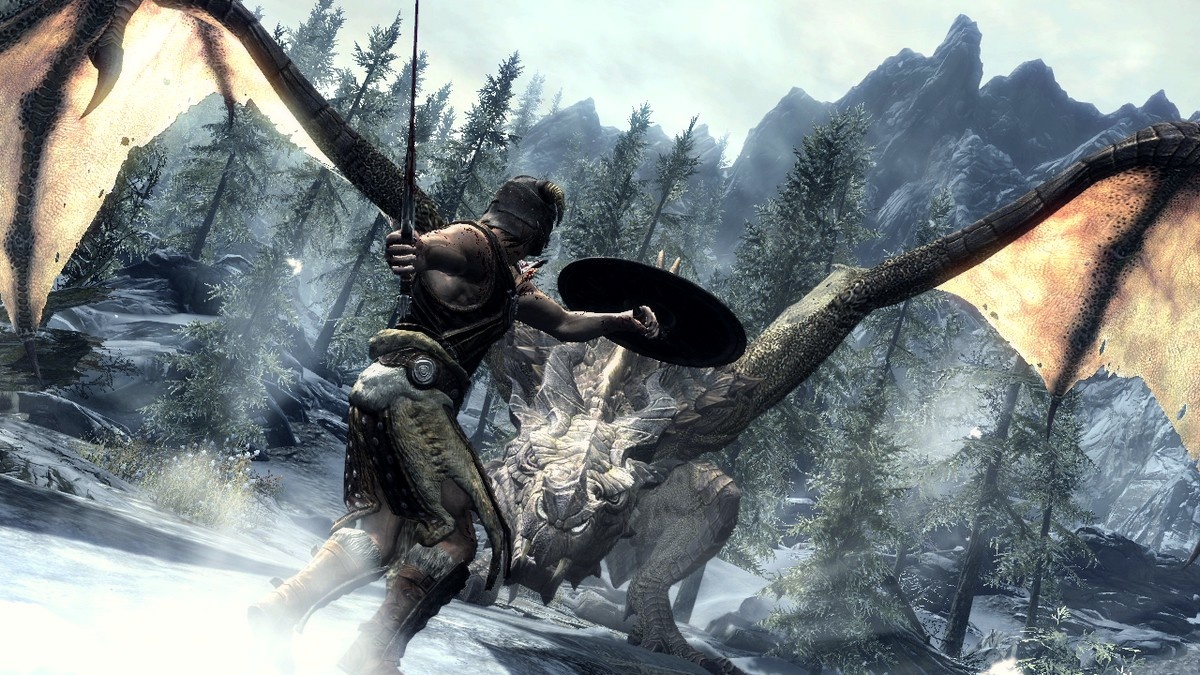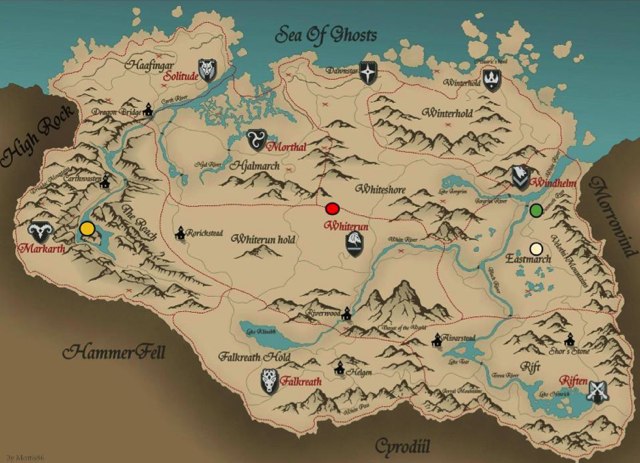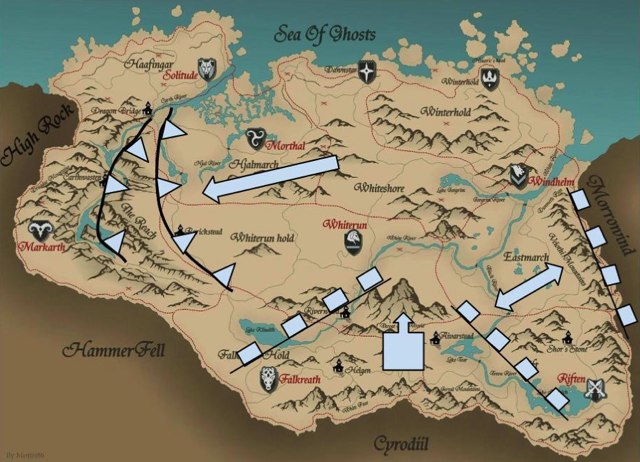A Sight For Ore Eyes: Examining The Geology Of Skyrim
Trained geologist Jane Robb wonders what we can learn from the geology of Skyrim and if it's accurate enough for the world of education.

There's no denying the popularity of The Elder Scrolls V: Skyrim. Fifteen months have passed since its release and fans are still donning their horned helms in the continued quest for treasure and adventure. This enduring popularity is even more remarkable when you consider that Skyrim is a single-player game. There are no multiplayer modes where player vs. player challenges provide the impetus to revisit and replay. And yet, Skyrim marches on.
At the heart of its longevity lies the humble mod. The opportunity to alter Skyrim's world by creating new objects and tinkering with combat has given players the chance to bring their real-life passions into the game.
However, while delving through the 13,000-plus strong catalogue of Lord of the Rings quests and--my personal favourite (until it was removed for copyright reasons)--mudcrabs that look like Dr. Zoidberg from Futurama, I found one topic to be particularly lacking: my own passion, geology. Yes, that's rocks. And, contrary to popular belief, geology is AWESOME.
So I decided to bring my own knowledge to the table and take a look at the geology of Skyrim. What can we learn from the rocks? Just how accurate is the geology? And is it enough to make Skyrim a valid tool in education and science communication?
To understand the geology of Skyrim, it's not enough to just look at the rocks, or simply observe the landscape. What you need is an understanding of the interactions between rock types and their spatial and geographical distributions, i.e. where they are located on the map and what that looks like. Often that takes the form of mountains, lakes, fields, and even hot springs.
The first question to ask is what kinds of rocks can you find in Skyrim? So far, I managed to map four different kinds of rock that can also be found in the real world. Because of this, I took the real world definitions of the rocks to determine their geology (i.e. their chemical formulas). I also looked at the ways in which they are formed according to TES lore.
The four types of rock include iron ore, gold ore, malachite (an ore of copper), and moonstone, which is actually what geologists call feldspar. These rocks can be found in different areas across Skyrim, but for ease of mapping I've currently only taken into account the locations where they are the most abundant, which is where the most ore veins can be found.
Looking at the map above, you can see the spatial distributions of the four different rocks. The gold colored one indicates where gold is found, red indicates iron, green indicated malachite, and cream indicates moonstone.
By looking at how each ore is made, we can build up a picture of how the world of Skyrim was theoretically formed. For instance, gold ore commonly forms near mountains, where the Earth's tectonic plates push together, while iron ore is formed by iron in the oceans turning to rust and then being squashed, folded, and stretched over the millennia to form iron ore deposits.
Rocks can be found in specific places not only because of the way they were formed. They can be also be transported to their modern resting places because of erosion or plate tectonic movements that push continents together to form mountain ranges or pull them apart to form oceans.
In the west of Skyrim, the curvy lines with triangles on them mean that the land to the northeast has been pushed on top of the land to the southwest. This type of plate movement builds mountains, and could explain why there are mountains in the west around Markarth.
In the east, the Rift holds the town of Riften that--maybe unsurprisingly--could indicate that this area has being pulled apart between the Throat of the World and the mountains adjacent to Eastmarch. When plates pull apart, one is actually being pulled down in relation to the other. This could mean that the Throat of the World is pulled up above the rest of Skyrim, which could account for why we see the highest mountains there.
Looking at the ore deposits in Skyrim, it's clear that gold is abundant over in the west, which is commonly associated with mountain building. Iron ore is commonly found in rocks changed through heat and pressure, which is also characteristic of rocks found close to areas of mountain building. In the east, malachite and moonstone occur near the Rift, where the plates are pulling apart. It's very common where plates pull apart to have increased volcanic activity, which is consistent with malachite and moonstone both being volcanic minerals.
From this analysis, it's interesting to see that Bethesda was faithful to real-world geological principles when creating Skyrim. I asked some members of Bethesda's Skyrim developer team about the geology of Skyrim, assuming that the geology must be deliberate. Surprisingly, they didn't have a consulting geologist on their team, but instead had a dedicated team of artists and developers that did their research without any background knowledge. I believe Bethesda deserves some serious kudos for that.
"Communicating something new and potentially boring or difficult to people through a medium they love is a great springboard and connecting point."
The geology of Skyrim project has also shown what a good tool popular videogames can be for science communication. They're excellent at communicating scientific principles, because so many people can relate to them. Communicating something new and potentially boring or difficult to people through a medium people love is a great springboard and connecting point. Other scientific organizations like the Welcome Trust have been using games as a way of communicating science for a while now, but I believe that using established popular video games is also a way in which to do this.
In the future, I'd like to see more collaboration between scientists, game developers, and artists to make the environments of videogames more realistic. We already see so many parallels between the real world and science in videogames (just take a look at Cameron's show the What If Machine), and some games like Assassin's Creed already have historians on board as narrative consultants.
Taking games and making them applicable to the real world has many benefits for learning and education, but the responsibility for doing so needn't fall the developers alone. Releasing software like Skyrim that allows users to modify aspects of the game is a great way to help people engage more with the story, science, and even learn some programming. Modding could become something teachers take up as part of a lesson in school or university classes.
So where do I go from here? My next step in the geology of Skyrim project is to develop a working mod that includes some of the geological features I have identified with a more complete mapping of the rocks found across its world. From there I hope to carry on helping out with other mods in Skyrim, and maybe even look to other games like Minecraft, which has lots of possibilities for a geologist. Indeed, Minecraft is already being used to teach geography in some schools.
I'll be hosting my project over at Dark Creations, so if anyone wants to get involved, then feel free to get in touch over there. It would be great to know what readers think of this project, so please put your views in the comments below.
'Got a news tip or want to contact us directly? Email news@gamespot.com


Join the conversation